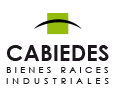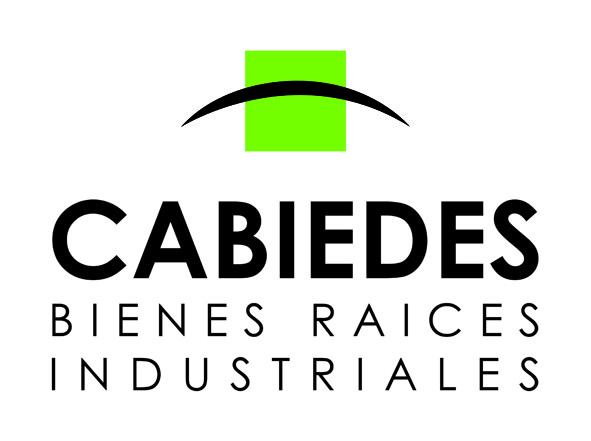How do Inventories Present in Statement of Cash Flow?
Think power in numbers, and find other like-minded companies willing to pool their cash in order to haggle lower prices with suppliers, who usually give big discounts to large firms who buy in bulk. Charlene Rhinehart is a CPA , CFE, chair of an Illinois CPA Society committee, and has a degree in accounting and finance from DePaul University. We saved more than $1 million on our spend in the first year and just recently identified an opportunity to save about $10,000 every month on recurring expenses with Planergy.
There is no cash outlay when recording the depreciation expense, such as when a piece of equipment has reached the end of its useful life. Every year, your business will convert part of the total cost invested and its fixed assets into cash. You’ll recover this amount through cash collections from sales so depreciation is a positive cash flow factor. Increasing accounts receivable hurts cash flow but decreasing helps it. Your accounts receivable asset indicates how much money customers who bought products on credit still owe your business.
While profit can be a great way to measure the success of your business, cash flow is essential to keeping your business running. And if you’re a product-based business, your inventory is one of the biggest factors for managing cash flow. It’s easy to tie up a lot of cash in inventory, and optimizing your inventory management process lets you keep enough free cash available for other operational expenses. Purchase of Equipment is recorded as a new $5,000 asset on our income statement.
In the full statement, we can see that Clear Lake has net cash flow of $20,000. The beginning cash balance was $90,000, making the ending cash balance $110,000 (see Figure 5.19). Let’s say we’re creating a cash flow statement for Greg’s Popsicle Stand for July 2019. Under Cash Flow from Investing Activities, we reverse those investments, removing the cash on hand. They have cash value, but they aren’t the same as cash—and the only asset we’re interested in, in this context, is currency.
- The use of RF scanners and software programs improves the ordering processes.
- This ratio gives you an idea of how quickly your company converts invoice sales into cash in hand, and it can also give you insight into what might be slowing down that process.
- Greg purchased $5,000 of equipment during this accounting period, so he spent $5,000 of cash on investing activities.
- That’s called cycle counting, and it’s critical to make sure you’re on top of your quantities.
- For example, early stage businesses need to track their burn rate as they try to become profitable.
- As such, they can use the statement to make better, more informed decisions about their investments.
The best high-yield savings accounts offer interest rates more than 17 times higher than the national average, meaning you’ll earn more on the money you’ve stashed away. Make a list of those goods you buy that aren’t moving at the same pace as your other products. Article by Melanie Chan in collaboration with our team of Unleashed Software inventory and business specialists. Melanie has been writing about inventory management for the past three years.
Pay attention to your supplier accounts
As for the balance sheet, the net cash flow reported on the CFS should equal the net change in the various line items reported on the balance sheet. This excludes cash and cash equivalents and non-cash accounts, such as accumulated depreciation and accumulated amortization. For example, if you calculate cash flow for 2019, make sure you use 2018 and 2019 balance sheets. Inventory optimization will help you maximize your company’s cash flow. You can use current demand forecasting and historical data to determine how much you can expect to sell monthly.
Finally, the amount of cash available to the company should ease investors’ minds regarding the notes payable, as cash is plentiful to cover that future loan expense. These figures can also be calculated by using the beginning and ending balances of a variety of asset and liability accounts and examining the net decrease or increase in the accounts. Changes in cash from investing are usually considered cash-out items because cash is used to buy new equipment, buildings, or short-term assets such as marketable securities. But when a company divests an asset, the transaction is considered cash-in for calculating cash from investing. Money that you have invested in inventory has been invested at a negative rate of return! You actually don’t know if you are going to make any money on that investment or not.
- Operating cash flow refers to the cash flow your business generates from its regular activities.
- More convenient than cash and checks — money is deducted right from your business checking account.
- Businesses take in money from sales as revenues and spend money on expenses.
- The aging schedule provides an at-a-glance snapshot of which invoices are overdue, as well as how much money you’re owed.
Besides his extensive derivative trading expertise, Adam is an expert in economics and behavioral finance. Adam received his master’s in economics from The New School for Social Research and his Ph.D. from the University of Wisconsin-Madison in sociology. He is a CFA charterholder as well as holding FINRA Series 7, 55 & 63 licenses. He currently researches and teaches economic sociology and the social studies of finance at the Hebrew University in Jerusalem.
Taking Regular Inventory
Giving your customers discounts for cash payments or cash transactions is a great way to boost your cash flow and keep things running smoothly. Your accounts payable, or notes payable, are the amounts you owed to vendors that are payable within the next 30 to 90 days. Without payables and credit, you have to pay for all goods and services at the time of purchase. For optimal cash flow management, you need to take a closer look at your payable schedule. When we buy or sell inventory on credit, it will impact the Accounts Payable and Accounts Receivable balance. The movement of both accounts also present on the cash flow statement, so they will impact both sides.
How does inventory affect cash flow
As such, they can use the statement to make better, more informed decisions about their investments. The cash flow statement (CFS), is a financial statement that summarizes the movement of cash and cash equivalents (CCE) that come in and go out of a company. The CFS measures how well a company manages its cash position, meaning how well the company generates cash to pay its debt obligations and fund its operating expenses. As one of the three main financial statements, the CFS complements the balance sheet and the income statement. In this article, we’ll show you how the CFS is structured and how you can use it when analyzing a company. Next, changes in operational assets and liabilities are used to continue reconciling net income to actual cash flow.
While stocking up in bulk may give you a wider gross profit margin, it can cause more problems than it’s worth. More inventory can result in dead stock and excess products, which tie up your cash. You can’t pay the bills with extra widgets, so you often end up discounting them to bring in much-needed cash. Those products that don’t sell well will sit in your warehouse, wasting space, which also costs you money because you’re paying for more warehouse space than your business actually needs. By making all adjustments to net income, we arrive at the actual, net amount of cash received or consumed by the business. Inventory is the current asset that presents on the company’s balance sheet.
The direct method of calculating cash flow
This number will help you determine how much inventory you need to order from suppliers and how frequently you need to order. In our examples below, we’ll use the indirect method of calculating cash flow. The direct method takes more legwork and organization than the indirect method—you need to produce tax calculator to estimate your tax refund and tax return and track cash receipts for every cash transaction. For that reason, smaller businesses typically prefer the indirect method. Increasing your prices is a concept that scares many business owners. But it’s OK to experiment with pricing to find the perfect number—how high are customers willing to go?
Innovative technologies have made their mark on every aspect of manufacturing, retail and eCommerce business, from product design through to after sale service. If you let your supplier order and stock inventory for you, ensure you have a system in place to closely monitor their actions.
Purchases or sales of assets, loans made to vendors or received from customers, or any payments related to mergers and acquisitions (M&A) are included in this category. In short, changes in equipment, assets, or investments relate to cash from investing. Cash flow is the money that flows in and out of your business, reflected on your cash flow statement. Cash flows in from product sales, investment income, and asset sales—while it flows out through inventory purchases, interest payments, rent, and salaries.
Non-cash expenses are all accrual-based expenses that are not actually paid for with cash or credit in a given period. The most common examples of non-cash expenses include depreciation, stock-based compensation, impairment charges, and unrealized gains or losses. As badly as you might want to make the sale, the late payments will hurt your business’s cash flow. If you opt for a sale despite any questionable credit, be sure to set it up with a high interest rate. Everyone loves an incentive, and if you offer customers a discount if they pay their bills ahead of time, you’re creating a win/win situation for both of you.


Únete a la discusión